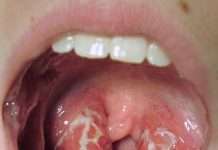
Severe acute respiratory syndrome (SARS) is a viral respiratory disease, caused by a coronavirus. First identified in February 2002, during an outbreak in China, and later spreading to other countries from late 2002 to late 2003, it caused about 8,000 illnesses and 700 deaths. It spread to 29 countries and then disappeared.
Researchers are still studying and working towards developing vaccines for SARS-CoV. The World Health Organisation (WHO) was at the forefront of ensuring that the disease did not overwhelm the world. It carried out international investigation efforts, with the assistance of the Global Outbreak Alert and Response Network (GORAN), while also collaborating with health authorities in affected countries to provide epidemiological, clinical and logistical support aimed at bringing the outbreak under control.
Transmission
An airborne virus, SARS can be spread through small droplets of saliva akin to the cold and influenza. Historically speaking, it was the first major severe and easily transmissible new disease to emerge in the 21st century, demonstrating a strong capacity to spread along international air travel routes.
Most importantly, SARS is transmitted through close contact with infected persons. In this context, close contact includes but not limited to having cared for or lived with someone with SARS or having direct contact with respiratory secretions or body fluids of a patient with SARS. Examples of close contact include kissing or hugging, sharing eating or drinking utensils, talking to someone within three feet, and touching someone directly. Close contact does not include activities like walking by a person or briefly sitting across a waiting room or office.
There is also the possibility of indirect spread through surfaces that have been touched by someone who is infected with the virus.
Majority of patients infected with SARS were hitherto healthy adults between the ages of 25 and 27. There were few suspected cases that were reported among children under 15 years. The case fatality among persons with the illness meeting the current WHO case definition for probable and suspected cases of SARS is around three per cent.
Symptoms
The incubation period of SARS is usually two to seven days but it may also be as long as ten days. The first symptom of the illness is generally fever, which is often high and sometimes associated with chills and rigors. These may also be followed by other symptoms, such as headache, malaise and muscular pain.
During the onset of illness, some cases present mild respiratory symptoms. Symptoms like rash, neurological and gastrointestinal findings are usually absent, even though some patients have reported diarrhoea during the early febrile stage.
Following three to seven days, the beginning of a lower respiratory phase is heralded by the onset of a dry and non-productive cough or dyspnoea (shortness of breath) that is either accompanied by or progresses to hypoxemia (low blood oxygen levels). Often, intubation and mechanical ventilation is required in ten to 20 per cent of cases with severe respiratory illness.
Chest radiographs may be normal throughout the course of illness, though not for all patients. There is a depletion of the white blood cell count in the early stage of the disease, with many people having low platelet counts at the peak of the disease.
Treatment/Prevention
While there is no cure or vaccine for SARS, WHO has advised that treatment should be supportive and based on the patient’s symptoms. To this end therefore, controlling outbreaks relies on containment measures such as prompt detection of cases through good surveillance networks, including an early warning system, isolation of suspected or probable cases, tracing to identify both the source of the infection and contacts of those who are sick and may be at risk of contracting the virus and quarantine of suspected contacts for 10 days.
Others are exit screening for outgoing passengers from areas with recent local transmission by asking questions and temperature measurement and disinfection of aircraft and cruise vessels having SARS cases on board using WHO guidelines.
Personal preventive measures to prevent spread of the virus include frequent hand washing, using soap or alcohol-based disinfectants. For those with a high risk of contracting the disease, such as healthcare workers, use of personal protective equipment, including a mask, goggles and an apron is mandatory. Whenever possible, household contacts should also wear a mask.
After its disappearance in July 2003, SARS has not resurfaced like other recurring viral infections, especially Ebola. However, scientists have called for vigilance and epidemic preparedness because the question is not if but when the next outbreak will occur. It, therefore, becomes expedient for governments all over the world to make adequate investments in their public health systems, especially in the drug research and development aspects, to ensure that the world is not overrun by the emergencies that accompany the outbreak of any epidemic.










